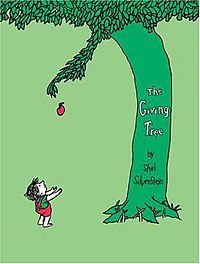Calibrating of Expectations work
-This will help, as a building, to innovate
-This is truly transformed writing
We often hit character work in Sept/Oct, but then not again until the following Sept/Oct
-We need to keep hitting it through:
-Writing units
-Reading notebooks
-Partner Talk
Argument Work
(There will be an Argument Institute and a Performance Assessment Institute this year)
The ability to be persuasive on-the-run is an important life skill.
We should teach kids to make better arguments.
It's not a win/lose in a argument we both come to a broader perspective and new insight.
Talk Protocols:
- ETS Assessment of Logic [Fender Bender] (There is so much about argument that has to do with thinking)
- Discovered: Whatever kids read first tends to be what they believe to be true
- It's better to work on the logic/think
- Folk knowledge (what you think you know about a subject)
- Emotional attachment (makes you very reluctant to value evidence from the other side)
- Created a bunch of scenarios where kids weigh and sort evidence
- Takes a whole period
- Teacher sets up a topic
- Create a scenario where there will be very polarized arguments (Should be go to the yard or go to the roof for recess?)
- Kids collect evidence for both sides
- Weigh the evidence
- Overall, which position do you
- Have some kids: "If you are really good at argument, and you think you could argue either side, stay in the middle because one of the sides may need you."
- Make sure there is individual arguing with students
- 1. Go caucus with your team
- Minimize the time they will have to give the argument (i.e. 1 min)
- What evidence will you use (because you might not get to everything)
- This forced them to weigh and sort their evidence
- Job for team: Get every individual ready to go have a debate
- 2. Go have the argument
- Have the opponent do a say-back of the best points
- 3. Go back to teams to plan a rebut
- 4. Go back and make a rebuttal
- Launch it in Language Arts, then take it across the curriculum
- New science standards are all about argument (New 2nd grade TC argument unit is a science unit [Forces and Motion])
Tip: 1st time you do it, be careful that you don't obsessed about preteaching everything. Just get the kids going, then we'll make it better.
1. Set up the book/scenario
Position: Overall, is the tree weak, or is the tree strong? Set up notes to collect both sides (make sure to suspend evidence)
2. Read the book as kids take notes
The Tree is Weak
|
The Tree is Strong
|
-evidence
-more evidence |
-evidence
-more evidence |
3. Divide the group
Have the students look over their notes, deciding which position they feel better prepared to argue. Have students stand in two lines facing each other: The "Tree is Weak" line, and the "Tree is Strong" line. They should face a partner. Make sure both lines are balanced. (Adjust if needed)
4. Break up the sides
Have each position break up into groups of 4 to caucus. Give them 5 minutes to prepare for a 1 minute debate. Groups should plan the best points, and decide on an order for sharing during debate.
5. The Debate
Have one position start first. They have exactly 1 minute. Then have the other position share for 1 minute.
6. Rebuttal Caucus
Caucus groups meet again for 5 minutes, sharing what the strongest counterarguments were, then planning a rebuttal.
7. Rebuttal
Debate partners match up. Each takes a turn rebutting the other's argument.
8. Reflection
9. Closing
There are several ways you could wrap this up. Remember, it's not about winning or losing!
-Send students back to their seats to write a "flash draft"
-Student reflection: What new thinking did you come to after listening to your partner?
-Work with your debate partner: What new position can the two of you create that works for both of your positions?
Our Examples:
The tree loves the boy. (Both of our arguments and supports can support this)
The tree has some major issues and should probably seek professional help. (We can prove it!)
6. Rebuttal Caucus
Caucus groups meet again for 5 minutes, sharing what the strongest counterarguments were, then planning a rebuttal.
7. Rebuttal
Debate partners match up. Each takes a turn rebutting the other's argument.
8. Reflection
Make a list of strategies that debaters did that was really effective: [Chart it!]
-Have kids share what they noticed
-Add a few things you noticed
-Offer a tip for the class (What did they forget? Text evidence?)
-*****Don't give kids things until they ask for them!!!!! ****** (Like suggesting kids come get the book for citing text)
-Don't take questions, otherwise you'll lose your momentum.
9. Closing
There are several ways you could wrap this up. Remember, it's not about winning or losing!
-Send students back to their seats to write a "flash draft"
-Student reflection: What new thinking did you come to after listening to your partner?
-Work with your debate partner: What new position can the two of you create that works for both of your positions?
Our Examples:
The tree loves the boy. (Both of our arguments and supports can support this)
The tree has some major issues and should probably seek professional help. (We can prove it!)



No comments:
Post a Comment